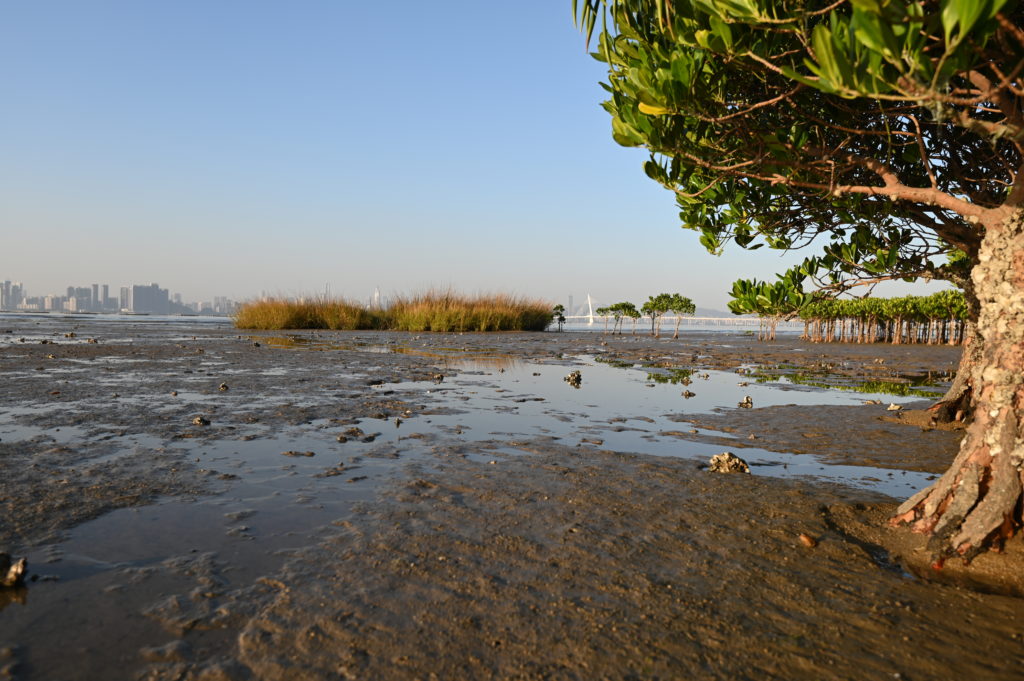Coastal mega-cities expose ocean wildlife and habitats to "relentless" boat traffic, new research shows.
The study focussed on China's Greater Bay Area, a coastal megalopolis encompassing Guangdong, Hong Kong and Macao.
With about 86 million people, the Greater Bay Area has the largest population and the second-largest economy of any bay in the world.
Researchers found an average of almost 6,000 vessels moving in the bay daily, leaving little undisturbed space for nature.
With many major coastal cities growing, the findings could aid future marine conservation and coastal planning.
The study was carried out by the Environmental Sustainability and Resilience Joint Centre (ENSURE) - a research partnership between the University of Exeter and the Chinese University of Hong Kong.
"We found that marine species are likely exposed to relentless presence of vessels," said Dr Phil Doherty, from the University of Exeter.
"Put simply, boats and ships are everywhere, all the time.
"In shallow waters like those of the Greater Bay Area, such traffic is likely to increase rates of shoreline erosion, turbidity (churned-up sediment), noise pollution and collisions with wildlife.
"The shallow water also means species cannot escape into the depths, leaving them little refuge."
Some conservation hotspots had areas that experienced disturbance on 95% of days.
The team analysed vessel tracking data from 2013-18, mapping precise locations and the daily distribution of marine traffic.
Dr Felix Leung, from the Chinese University of Hong Kong, said: "With Hong Kong and Shenzhen hosting the busiest port in the world, the relentless pace of economic growth and development is taking a toll on the marine ecosystem.
"To safeguard these ecologically sensitive areas, governments must adhere to the Global Biodiversity Framework, ensuring both protection and sustainable management for future generations."

The results are freely available, and could be useful in the Greater Bay Area and beyond.
"The Greater Bay Area is an interesting test case for coastal cities as they grow," said Dr Stephen Lang, also from the University of Exeter.
"We need to bring the environment into the conversation as development happens.
"Pressure on marine environments near coastal cities is only going up, and we need to think about how to limit human impact."
Action could include designating shipping lanes that avoid key habitats, reducing shipping, reducing speeds and switching to quieter, less polluting vessels.
As well as high overall traffic, the Greater Bay Area has hundreds of fishing vessels operating daily.
The bay contains many important marine habitats, and is home to several animal species of conservation concern, including the Chinese white dolphin and the finless porpoise.
It also contains populations of green turtles, Chinese horseshoe crabs and mangrove horseshoe crabs - but decades of extensive land reclamation have contributed to fundamental changes that put many of these communities under threat.






